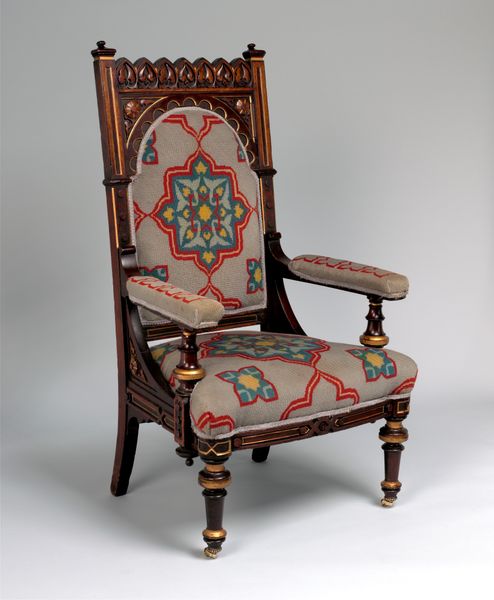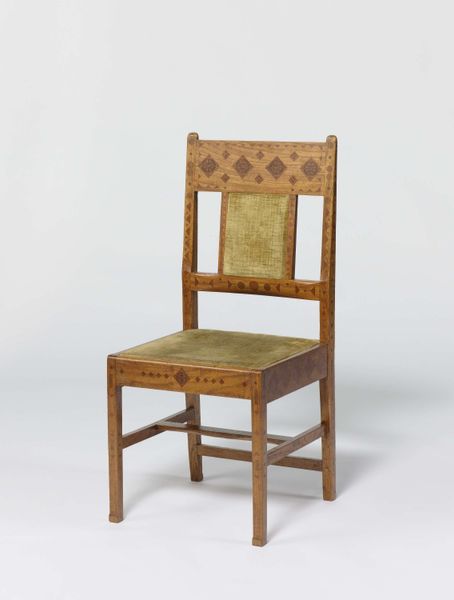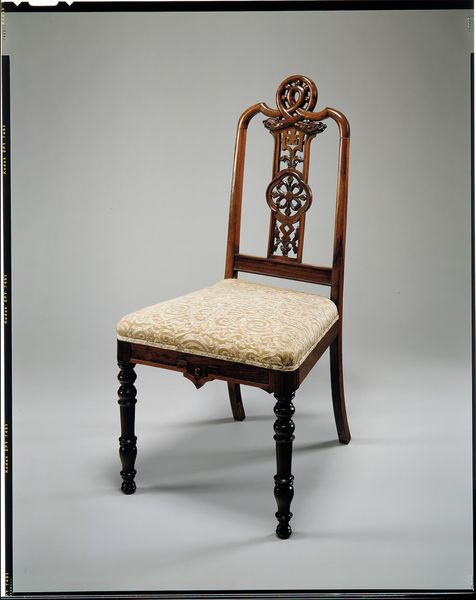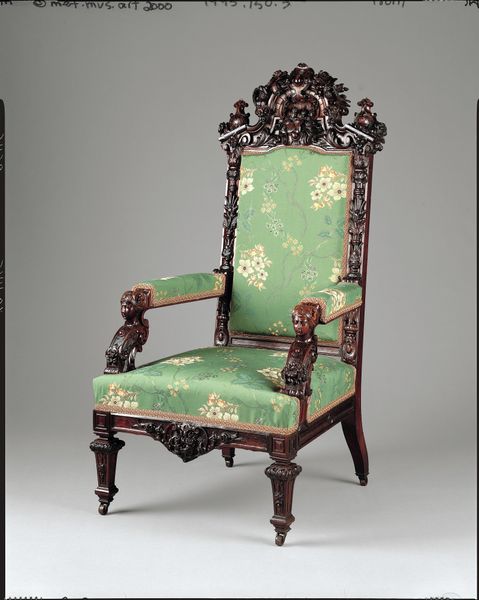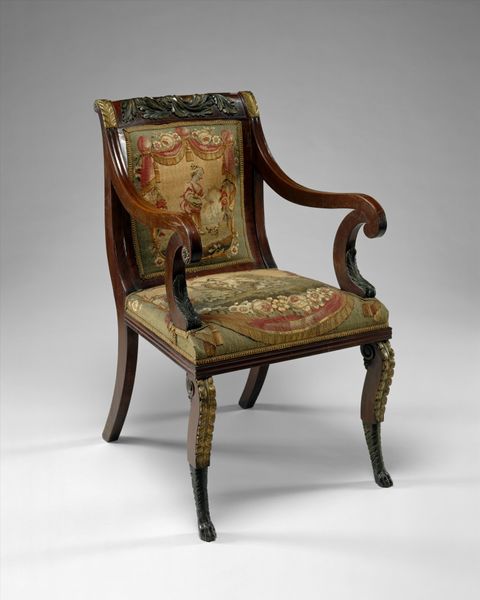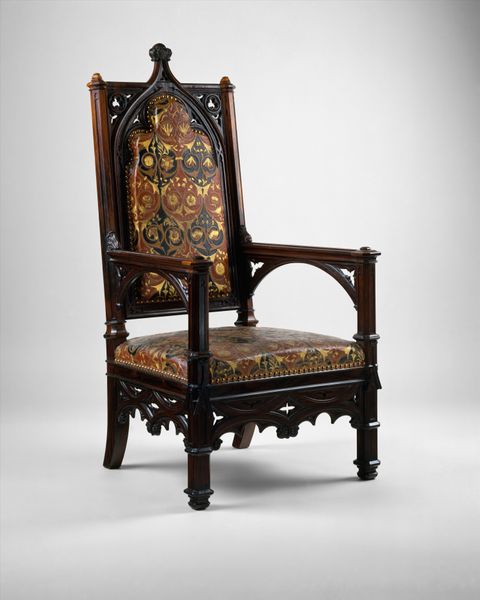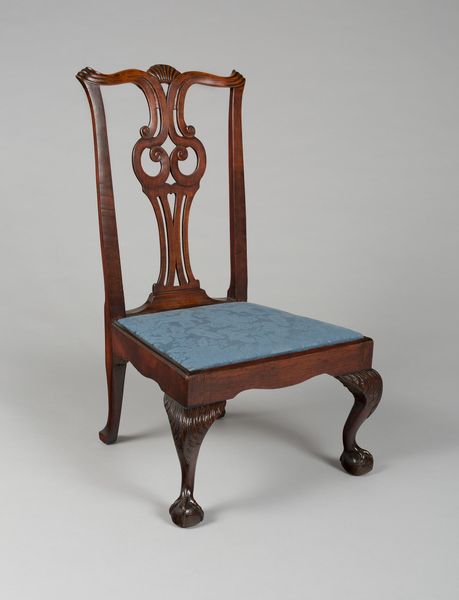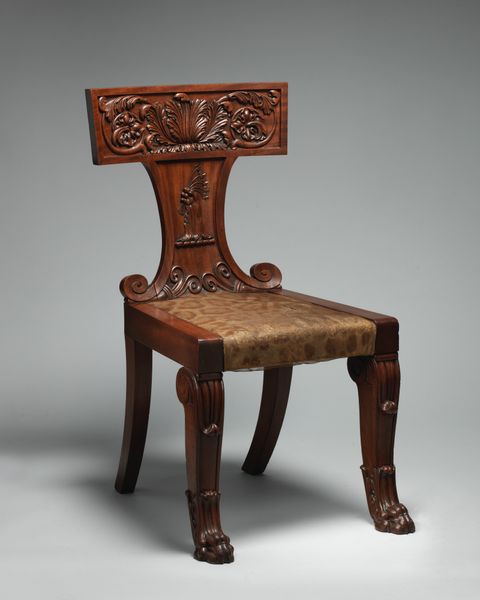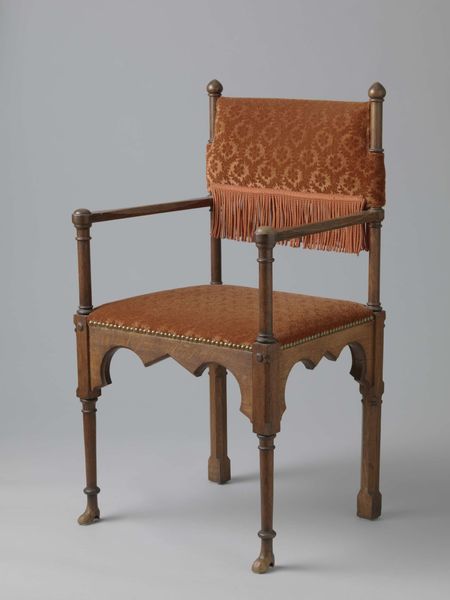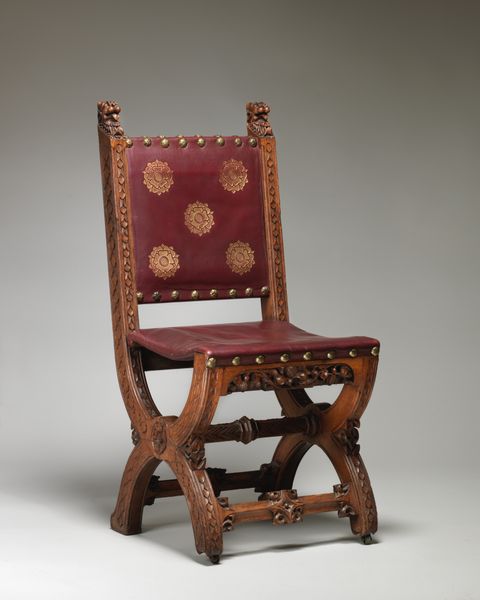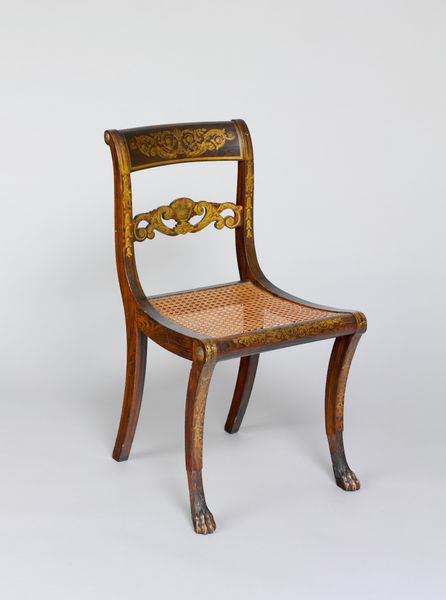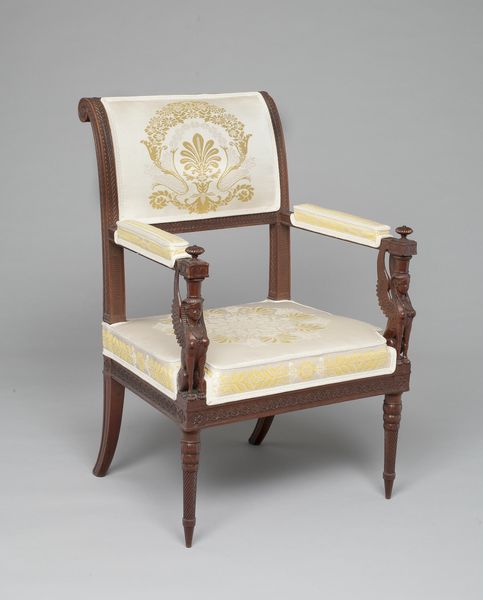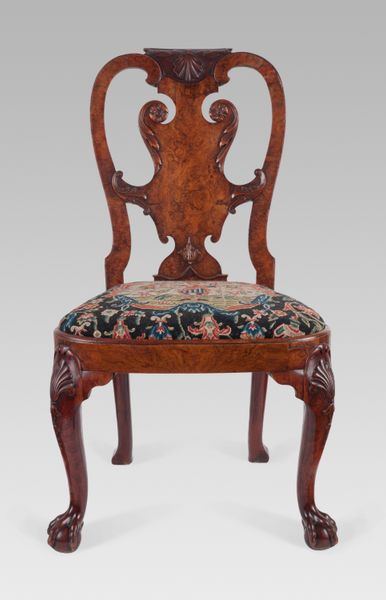
Dimensions: 14 1/2 x 19 1/2 x 44 in. (36.8 x 49.5 x 111.8 cm)
Copyright: Public Domain
Curator: Ah, here we have an intriguing example of late 19th-century decorative art. This side chair was crafted around 1879 by the Herter Brothers, and you can currently find it here at the Met. Editor: My immediate reaction is…celestial bordello. The green velvet and the star motif clash spectacularly. There's an intriguing tension between aspiration and comfort. Curator: That’s a very…vivid interpretation. Tell me more about why that specific choice of words? Editor: The green velvet seat cushion signals a specific idea of lush materiality—comfort— while the inlaid stars hint at some symbolic, perhaps utopian ambition. And just look at that fine woodworking, it is amazing! There's labor layered in every corner. Someone painstakingly carved these details, choosing form over mass production, wouldn’t you say? Curator: Absolutely. It speaks volumes about the Arts and Crafts movement, doesn't it? A return to traditional craftsmanship, a rejection of industrial aesthetics. Editor: But a fraught return, of course. This piece sits firmly in a very upper-class parlor. All that craftsmanship... it hides the labor behind it. The mixed media, the fine woods... were they locally sourced or global? What were the Herter Brothers’ shops doing that underpinned this level of ornate craft? Curator: It’s fascinating how an object designed for rest can raise so many questions about work. Do you think the Herter Brothers, in combining these materials, were conscious of those contrasts? The green cushion and constellation symbols definitely spark unique dialogues between earthly comforts and celestial aspiration. Editor: Conscious or not, that's what it gives. I do wonder what the life cycle of the piece was after the 19th Century. Who sat here and how long did this "last" to become a museum piece? Curator: Well, as we wrap up, it appears this chair is more than something to merely sit on. Editor: More than a throne? Maybe. It’s a testament to artistic vision, societal contradictions, and, literally, layers of human input.
Comments
No comments
Be the first to comment and join the conversation on the ultimate creative platform.
